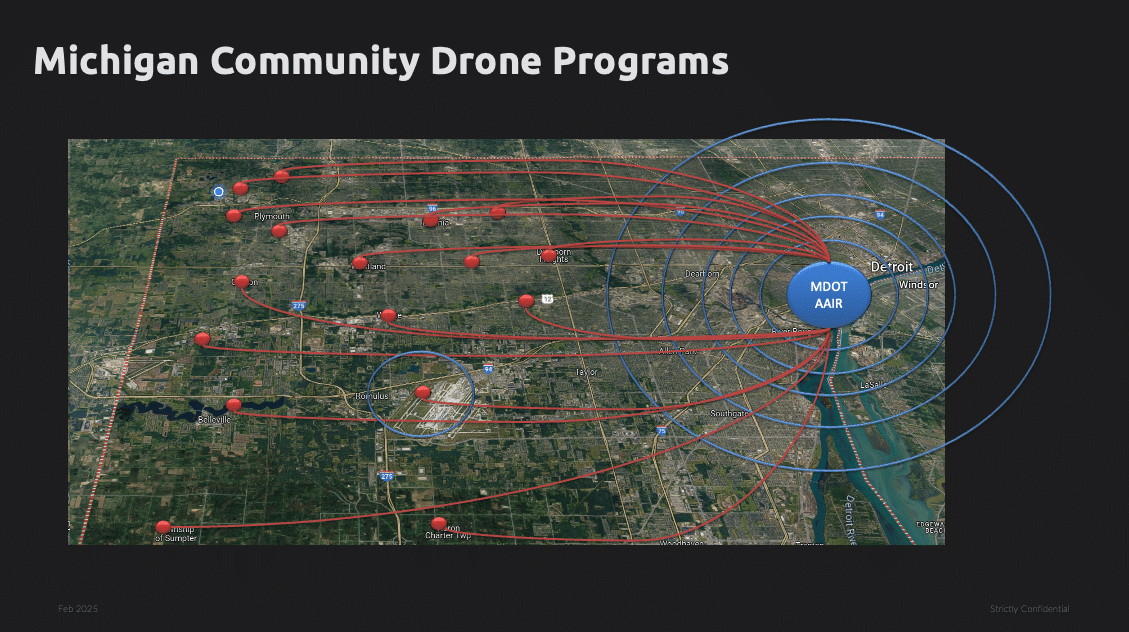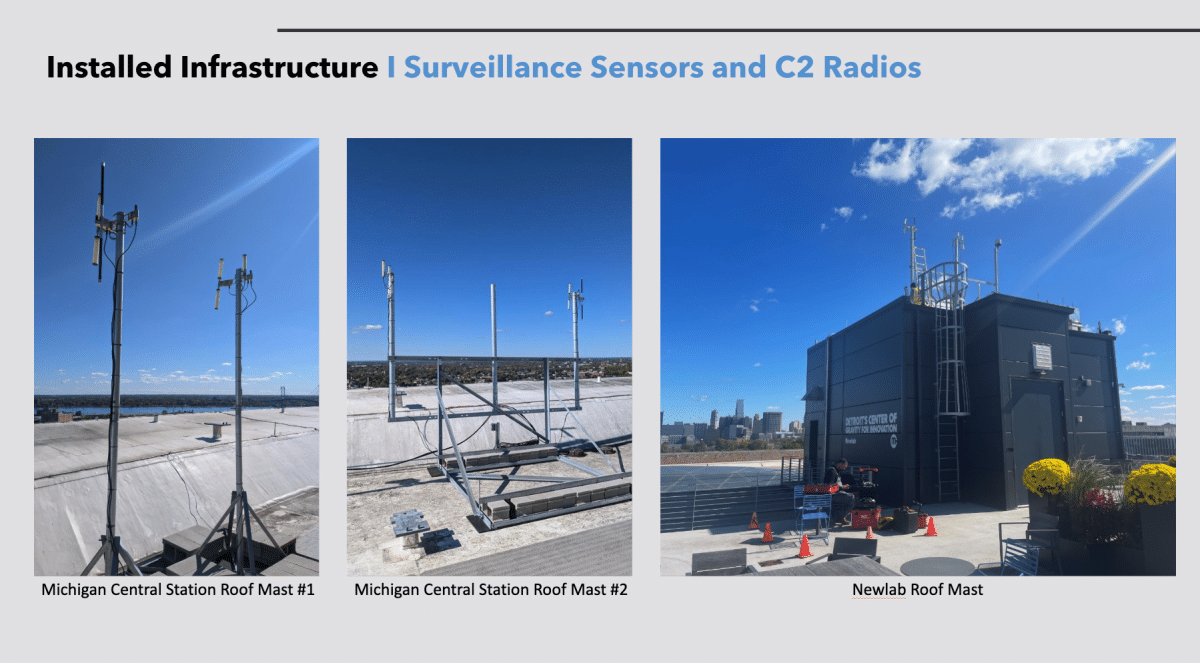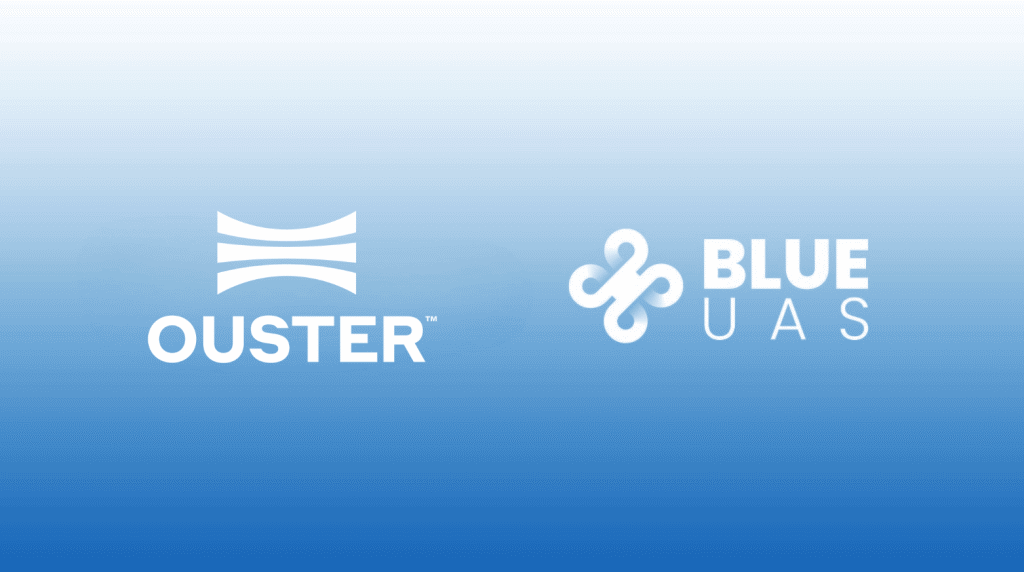Airspace Link: Safely Advancing Data-Driven UAS Operations in Detroit and Across America
February 25, 2025 | Dawn Zoldi

Airspace Link, a plucky Michigan-based technology start up, has made significant strides in facilitating data-driven operations that uplift the uncrewed aircraft system (UAS) and advanced air mobility (AAM) industries. In this exclusive interview, Bruce Briglia, Airspace Link’s UAS Project Consultant, discusses how the company continues to shape the innovative Advanced Aerial Innovation Region (AAIR) in Detroit, Michigan and similar ecosystems around the country. Read on to better appreciate just how Airspace Link, using a data-driven operational approach, safely integrates drones into the national airspace system (NAS) and local communities and by doing so, takes the entire industry to even higher heights.
The Mission: Safety
Dawn Zoldi: What is Airspace Link’s mission, and how does it relate to recent events in aviation?
Bruce Briglia: Airspace Link’s mission centers on airspace safety and the integration of drones into the NAS. This mission has gained even more importance in light of recent aviation accidents. Now, more than ever, there is a critical need for enhanced airspace awareness and ground risk management.
Dawn Zoldi: How does Airspace Link address the complexity of today’s airspace?
Bruce Briglia: The NAS is already complicated. It will become even more so with the addition of new entrants like drones and electric vertical takeoff and landing (eVTOL) aircraft. Airspace Link has developed technology that provides crucial situational awareness. Our data-driven solutions allow stakeholders to communicate with each other and understand what’s happening in the airspace – and on the ground – in real-time.
AirHub@ Portal: A Cornerstone of Data-Driven Operations
Dawn Zoldi: Bruce, we’ve had your CEO, Michael Healander and Colby Free, VP of Product, from Airspace Link on our various shows before to talk about how AirHub Portal, your keystone product, facilitates safe drone ops. In your own words, briefly explain what AirHub Portal does.
Bruce Briglia: AirHub Portal is a key component of Airspace Link’s data-driven approach to UAS operations. It serves as an operations management tool for drone operators, providing essential data analysis, planning capabilities and flight tracking functionalities. The portal integrates various data sources, including real-time monitoring of drone activity and crewed aircraft data, to create a comprehensive picture of the airspace.
Dawn Zoldi: What sets AirHub Portal apart from other UAS management tools?
Bruce Briglia AirHub Portal distinguishes itself through its comprehensive approach to data integration and analysis. It pulls in data from a wide range of sources, including certified data from the FAA and the Census Bureau, as well as geospatial data from Esri. The portal’s API-driven architecture allows for easy integration with other systems and data providers. This makes it a versatile tool for UAS operators of all sizes. 
The AAIR Ecosystem in Detroit
Dawn Zoldi: Let’s turn our focus to the AAIR ecosystem Airspace Link continues to build in Detroit. Tell us about it.
Bruce Briglia: The Advanced Aerial Innovation Region (AAIR) is an innovative ecosystem that Airspace Link is developing in Detroit, Michigan. This initiative is a public-private partnership involving the state of Michigan, Michigan Central, and Newlab, a startup incubator. AAIR aims to enable beyond visual line of sight (BVLOS) drone operations, starting with small-scale, limited operations and progressing to repeatable, scalable flights across the city.
Q: How does the Michigan Central Innovation District fit into the AAIR ecosystem?
A: The Michigan Central Innovation District is a crucial component of the AAIR ecosystem. It includes a three-mile radius urban testing ground for AAM, which allows companies to evaluate their operational solutions in real-world scenarios and accelerate the path to commercialization.
Dawn Zoldi: The physical campus is unique there. Tell us about it.
Bruce Briglia: The AAIR leverages Detroit’s unique infrastructure, including the renovated Michigan Central Station and the adjacent Book Depository building, now home to Newlab. This summer, Michigan Central celebrated the opening of an Operations Center in the historic Michigan Central Station building. The next step is the development of a 12th-floor Air Traffic Control tower. In the meantime, real-world drone deliveries are starting to take place as part of pilot programs from the roof of Newlab, a mobility startup hub located on the Michigan Central innovation campus. These facilities serve as central hubs for drone operations, equipped with advanced sensors and technologies to support safe and efficient flights.
Dawn Zoldi: Speaking of technologies, which ones has your team deployed as part of the AAIR project to keep the skies above Detroit safe?
Bruce Briglia: The AAIR project incorporates a range of advanced technologies to ensure safe drone operations. These include: ADS-B receivers for tracking aircraft, systems for resilient command and control (C2) of drones; UAS detection systems that can identify radio frequencies and remote ID for small drones; as well as weather sensors to monitor environmental conditions. These technologies are installed on the roofs of key buildings in the AAIR ecosystem to provide comprehensive coverage and data collection capabilities.
Q: How is the AAIR attracting businesses and innovators to Detroit?
A: The AAIR ecosystem, particularly through the Michigan Central Innovation District, has become a magnet for companies looking to develop and test their AAM technologies in real-world conditions. By providing state-of-the-art facilities, a supportive ecosystem and real-world opportunities, AAIR continues to attract businesses and innovators from around the world, to establish Detroit as a leader in the AAM industry.
Q: How does the AAIR contribute to the broader goals of AAM in Detroit?
A: The AAIR plays a pivotal role in positioning Detroit as a hub for AAM. It’s part of a comprehensive strategy that extends beyond traditional automotive mobility to include AAM and drone technology. The state of Michigan, along with Michigan Central, has invested millions of dollars into AAM, including the Advanced Air Mobility Activation Fund. This fund, a partnership between the Michigan Department of Transportation and the Office of Future Mobility and Electrification, aims to support projects that address real-world problems, particularly in rural areas, by leveraging drone technology for medical supply delivery and other critical services. One other point. In Romulus, Michigan, Airspace Link is also helping to open up complex airspace near the Detroit Metropolitan Airport for drone operations.
Advancing BVLOS…Beyond Detroit
Dawn Zoldi: Beyond Detroit, where else is Airspace Link making an impact?
Bruce Briglia: While Detroit serves as a flagship location for Airspace Link’s innovations, the company is actively expanding its operations across the United States. Two notable locations where Airspace Link is making significant strides are Arlington, Texas, and Ontario, California.
Dawn Zoldi: Before we get to your work in these other two states, tell us more about your programs that various communities across the nation leverage to support safe drone operations.
Bruce Briglia: Safe drone operations start with community engagement, which is why that engagement remains a critical component of Airspace Link’s approach to integrating drones into local airspaces. We have developed the Fly Safe program, powered by AirHub® Portal, to provide communities with accessible information about drone operations in their area.
Specifically, the FlySafe Program provides a dedicated webpage for communities to communicate crucial information about drone operations. This includes:
-
Publishing current local, state, and federal drone rules and regulations
-
Sharing airspace advisories and restrictions
-
Providing ground risk information
-
Offering transparency about government agency drone usage, including details on flight locations, durations, and purposes
For participating communities, the FlySafe Program provides crew and asset management tools, drone registration and usage tracking capabilities, support for BVLOS ops and real-time tracking of drones in the community using partner sensors. Airspace Link also offers comprehensive services to communities that adopt the FlySafe Program including training, assistance in obtaining FAA waivers and dedicated customer support.
Dawn Zoldi: Let’s revert back to California and Texas as examples of Airspace Link’s impacts beyond Michigan. What is Airspace Link doing in those locations?
Bruce Briglia: Those communities have successfully implemented the FlySafe Program. Airspace Link has formed a significant partnership with the City of Arlington, which is implementing its FlySafe Program and AirHub platform. This collaboration is advancing drone integration in the city by supporting municipal readiness and focusing on providing access to traditionally underserved neighborhoods. The city plans to use drones for goods delivery to launch smart community development.
Dawn Zoldi: How about California? What has Airspace Link helped to accomplish there?
Bruce Briglia: Through FlySafe, Ontario has implemented drone initiatives in public safety, infrastructure inspection and product delivery. Our collaboration has positioned Ontario as one of the most drone-ready cities in America. Key aspects of our partnership include: mapping air and ground hazards to ensure safe drone operations, building safety case reports, authorizing operations in real-time with the FAA and monitoring flights for safety and success. The city is leveraging its existing advanced fiber-optic broadband network to maximize the effectiveness of drone communication and secure the safest routes possible. Building on our initial success, it is also now exploring expanded services like recreational drone parks and on-demand cargo delivery zones. 
Future Developments and Further Expansion
Dawn Zoldi: Looking ahead to 2025, what developments can we expect from Airspace Link?
Bruce Briglia: As we look towards 2025, Airspace Link is poised for significant growth. We continue to focus on expanding the AAIR in Michigan with our partners. We also aim to bring that concept to other cities across the country. We also plan to continue improving our platform. We certainly seek to become a trusted third party UAS traffic management (UTM) service provider for commercial BVLOS drone flights, starting in the Dallas-Fort Worth area. To do this, we plan to enhance the AirHub® Portal with new UTM solutions to manage drone traffic, detect and resolve conflicts and support even more complex BVLOS flights than we already do.
Dawn Zoldi: Bruce, do you have any concluding remarks for our readers?
Bruce Briglia: Absolutely. Airspace Link’s data-driven approach to UAS operations continues to set new standards for safety, efficiency and innovation in the drone industry. From our comprehensive AirHub Portal to the groundbreaking AAIR ecosystem in Detroit, we are paving the way for a future where drones are seamlessly integrated into urban settings and into our daily lives. As we move deeper into 2025 – and beyond – keep an eye on Airspace Link’s continued expansion.
To learn more about Airspace Link watch Bruce Briglia on the Dawn of Autonomy podcast and visit their website.


